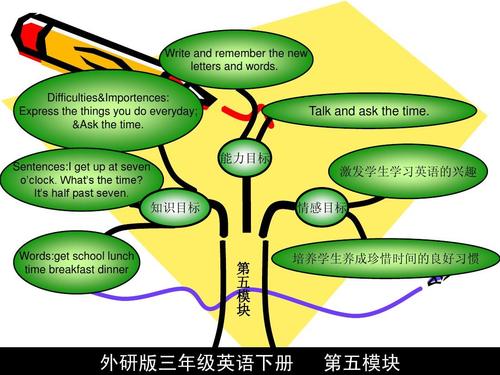高二时孤身奋斗的阶段,是一个与寂寞为伍的阶段,是一个耐力、意志、自控力比拚的阶段。下面课件网小编为您推荐高二英语课件:《Unit 4 Body language》。

教案【一】
教学准备
教学目标
1. 教学目标
(1)知识目标:学生能掌握下列重点单词和短语的意义和用法:greet, represent, approach, expression, defend, misunderstand, adult, cheek, major, likely, in general。能够表达一些Body language.
(2)能力目标:学生能掌握基本的阅读理解方法:速读,寻读,归纳中心和查找细节。
(3)情感目标:学生了解不同国家和文化的身势语,激发学生学习这种语言的兴趣。
教学重难点
教学重点和难点
(1) 培养学生的阅读策略和技巧,让学生了解文章的细节知识和文章结构。
(2) 让学生合适地使用不同的身势语。
(3)课文中现在分词作定语和状语的长难句。
教学过程
Step 1. Lead in
(1)The teacher shows a question on screen: How can we communicate with others when we can’t speak ?
Then ask a student to answer.
设计说明:引出本单元的话题。
(2) The teacher shows some pictures on screen of some body language and ask some students to guess and discuss the meaning they stand for. 设计说明:引出本节课的题目。
Step 2. Fast reading
1. Go through the passage quickly and find out the main idea of each paragraph.
o Match the main idea of each para. with lines.
(Para.1) A. Other examples of different greeting body language.
(Para.2) B. Different people have different body language.
(Para.3) C. Summary of body language.
(Para.4) D. Meet the visitors at the airport.
(Para.5) E. Examples of different greeting body language.
2. Try to write down the main idea of the text.
The text is mainly about different _____________ in different countries. In order to avoid difficulties in today’s world of cultural crossroads, we should ___________________________.
设计说明:通过这个题目的练习,让学生掌握速读,先对文章段落大意有一个了解。然后再去归纳中心思想。
Step 3. Careful reading
Read Para. 1 and decide if the following statements are true (T) or false (F).
(1) Yesterday, another student and I, representing our university's student association, went to the Capital International Airport to meet this year's international students. ( )
(2) After an hour of waiting for their flight to arrive, I saw several young people enter the waiting area looking around curiously.
( )
Read Para.2&3 and match the people with their ways of greeting
Tony Garcia (Columbia) A. shakes hands and kisses others twice
on each cheek
Ahmed Aziz B. Bows
(Jordan)
Akira Nagata (Japan) C. shakes hands
George Cook (Canada) D. approaches others closely and touches
their shoulder and kisses them on the cheek
Darlene Coulon(France) E. stand quite close to other men but will
usually not touch women.
Read Para. 4&5 and decide whether the following statements are true (T) or false (F).
(1) All cultures don’t greet each other the same way. ( )
(2) From the passage we can see western cultures are better than eastern cultures. ( )
(3) It’s necessary to study body language because it helps us to get better understanding among people from different cultures. ( )
(4) Only a small number of people greet by shaking hands. ( )
设计说明:通过这些题目的练习,让学生掌握文章的细节内容和阅读理解的细节题目的解题方法。
Language Points
1. approach vi. &vt.向……靠近;n.靠近;方法,步骤(后常跟介词to)
即时练习
(1) When I ____________(approach) the dog, it ran away at once.
(2) Can you come up with a good approach of solving this problem? (单句改错)
2. likely adj. 可能的;有希望的
be likely to do 很可能……;有希望……(主语既可以是人,也可以是物)
It is likely that...很可能……
即时练习
(1)She is the most _________ girl to win the prize.
(2) It’s likely that he will succeed.(句型转换)
=____________________________
3. Yesterday, another student and I, representing our university’s student association, went to the Capital International …...
representing 是现在分词(非谓语)作定语,相当于定语从句:who represented ….,谓语是went。
即时练习
(1) Mr. Wang, who taught us English before, retired last week. (把划线部分变为非谓语)_____________
(2)The girl __________(study) in the classroom is my sister. (用非谓语填空)
4. I stood for a minute watching them and then went to greet them.
watching 是现在分词(非谓语)作伴随状语,表示watch和stood同时发生,谓语动词是stood和went。
即时练习
(1) The boy stood there and cried.(把划线部分变为非谓语)
The boy stood there_________.
(2)The boy is sitting before the computer__________ (play) games. (用非谓语填空)
设计说明:通过这些题目的练习,让学生掌握课文中的重点单词,短语和长难句,促进对文章细节的理解。
Step 4. Consolidation
阅读下面材料,在空白处填入适当的内容(1个单词)或括号内单词的正确形式。
Yesterday, another student and I,(1)___________(represent) our university’s student association, went to meet this year’s international students. After half an hour of (2) _______(wait), I saw several young people enter the waiting area looking around(3) ___________ (curious). I went forward to meet (4) _______(their). After being introduced, they greeted each other in different ways, (5) __________(cause) some cultural mistakes.
As I get to know more international friends, I learn more about this
(6) __________ (culture) body language. People communicate not only with
(7) _________(speak) language, but also through physical distance, actions or posture. These actions are simply ways in (8) __________cultures have developed. (9) __________general, studying international customs can certainly help avoid(10)__________(difficult) in today’s world of cultural crossroads.
Correct the mistakes in the sentences.
1. I stood for a minute watched them and then went to greet them.
2. Julia stepped back appearing surprising.
3. Akira Nagata from Japan came in smiled.
4. Most people around the world now greet each other by shake hands.
5. These action are not good or bad.
Step 5. Free talk
After discussing with your deskmate, think out the body language you know and act it out.
Ask some pairs to perform in front of the class.
设计说明:学生通过阅读和讨论对文章有了深层的理解,同时对身势语这个话题更加熟悉。 这个环节师生互动、生生互动,训练了学生的口语表达能力,促使他们把所学的知识和技能转化为运用英语的能力。
Step 6. Summary
What have we learned in this class?
We have learned:
o some body language in different countries
osome language points
ohow to communicate with different people properly using body language
设计说明:这一环节主要是对所学内容进行总结,使学生认识到学习“身势语”的必要性和重要性。
Step 7. Homework
Underline all the important words, expressions and sentences.
课后习题
阅读下面材料,在空白处填入适当的内容(1个单词)或括号内单词的正确形式。
Yesterday, another student and I,(1)___________(represent) our university’s student association, went to meet this year’s international students. After half an hour of (2) _______(wait), I saw several young people enter the waiting area looking around(3) ___________ (curious). I went forward to meet (4) _______(their). After being introduced, they greeted each other in different ways, (5) __________(cause) some cultural mistakes.
As I get to know more international friends, I learn more about this
(6) __________ (culture) body language. People communicate not only with
(7) _________(speak) language, but also through physical distance, actions or posture. These actions are simply ways in (8) __________cultures have developed. (9) __________general, studying international customs can certainly help avoid(10)__________(difficult) in today’s world of cultural crossroads.
Correct the mistakes in the sentences.
1. I stood for a minute watched them and then went to greet them.
2. Julia stepped back appearing surprising.
3. Akira Nagata from Japan came in smiled.
4. Most people around the world now greet each other by shake hands.
5. These action are not good or bad.
教案【二】
教学准备
教学目标
Teaching aims:
1. Knowledge aims: enable the students to know the meaning of some words and phrases, such as frown, yawn, turn his back to someone, nod the head up and down .
2. Ability aims: enable the students to know how the people around the world to show their feelings by using body language.
3. Emotional aims: encourage the students to show out their feelings by using body language.
教学重难点
Teaching important and difficult points:
1. Make the students familiar with the universal gestures and actions.
2. How we show our feelings by using body language correctly.
教学过程
略
课后习题
Homework:
Rewrite this passage by using the outline and details.



